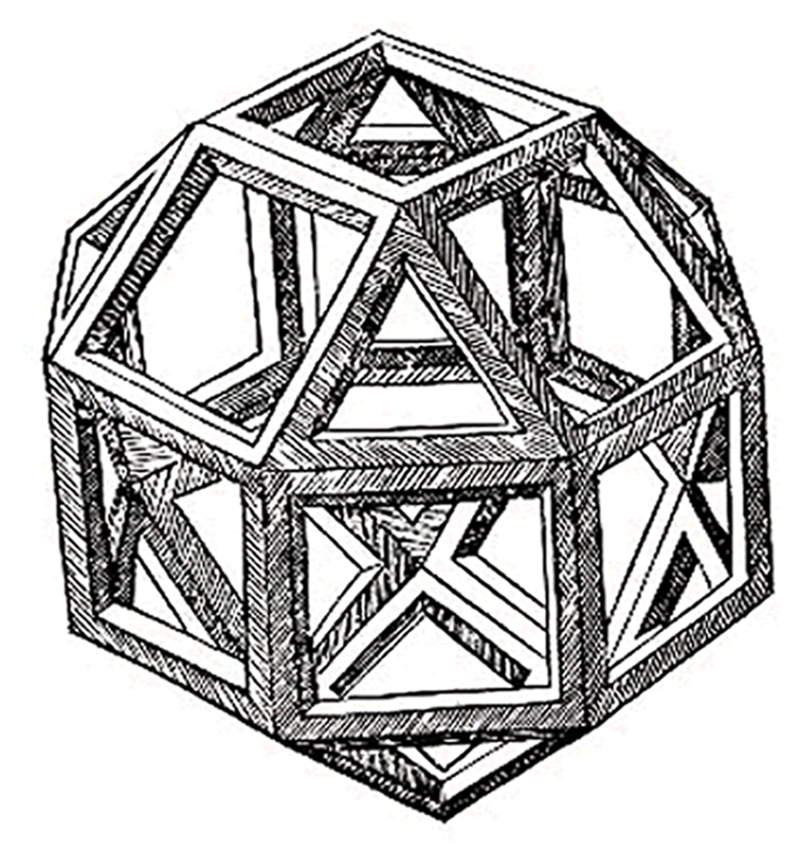Scientific studies
Leonardo's approach to science was observational: he tried to understand a phenomenon by describing and depicting it in utmost detail and did not emphasise experiments or theoretical explanation. Since he lacked formal education in Latin and mathematics, contemporary scholars mostly ignored Leonardo the scientist, although he did teach himself Latin. In the 1490s he studied mathematics under Luca Pacioli and prepared a series of drawings of regular solids in a skeletal form to be engraved as plates for Pacioli's book De divina proportione, published in 1509.
The content of his journals suggest that he was planning a series of treatises to be published on a variety of subjects. A coherent treatise on anatomy was said to have been observed during a visit by Cardinal Louis 'D' Aragon's secretary in 1517. Aspects of his work on the studies of anatomy, light and the landscape were assembled for publication by his pupil Francesco Melzi and eventually published as Treatise on Painting by Leonardo da Vinci in France and Italy in 1651 and Germany in 1724, with engravings based upon drawings by the Classical painter Nicolas Poussin. According to Arasse, the treatise, which in France went into 62 editions in fifty years, caused Leonardo to be seen as "the precursor of French academic thought on art".
While Leonardo's experimentation followed clear scientific methods, a recent and exhaustive analysis of Leonardo as a scientist by Fritjof Capra argues that Leonardo was a fundamentally different kind of scientist from Galileo, Newton and other scientists who followed him in that, as a Renaissance Man, his theorising and hypothesising integrated the arts and particularly painting.







0 comments
Sign in or create a free account